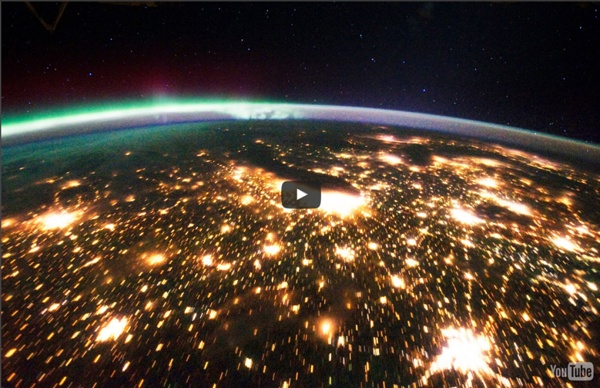



At This Vending Machine, Swapping is the New Buying - Environment We're used to putting money in a vending machine and instantly receiving consumable goods—a bag of chips, a soda, or even a new pair of headphones—in return. But what if vending machines became a fresh way to reuse, recycle, and trade with people in your community? That's the vision of the Swap-O-Matic, a New York City-based vending machine project that wants to "shift culture away from an emphasis on unconscious consumption" by encouraging people to donate and receive used items for free. To use the Swap-O-Matic, you register with an email address using the machine's touchscreen interface. New traders start out with three swapping "credits." Donating an item earns additional credits, which can be redeemed for anything else in the machine. Lina Fenequito, the primary creator and designer of the Swap-O-Matic, has long been an advocate of sustainable living and responsible consumption of resources. Via Springwise Photo courtesy of Swap-O-Matic
Solar System Scope AlphaKnowledge: Christopher Donohue: A sweet lesson on patience. This post falls outside of my normal business oriented content. Yet this is a lovely story that should be shared, which falls within my core philosophies: be kind, be loyal, be helpful and contribute. There is so much niceness in the world, but it goes unreported usually. A sweet lesson on patience. A NYC Taxi driver wrote: I arrived at the address and honked the horn. After a long pause, the door opened. By her side was a small nylon suitcase. There were no clocks on the walls, no knickknacks or utensils on the counters. 'Would you carry my bag out to the car?' She took my arm and we walked slowly toward the curb. She kept thanking me for my kindness. 'Oh, you're such a good boy, she said. 'It's not the shortest way,' I answered quickly.. 'Oh, I don't mind,' she said. I looked in the rear-view mirror. 'What route would you like me to take?' For the next two hours, we drove through the city. Two orderlies came out to the cab as soon as we pulled up. 'How much do I owe you?' 'Nothing,' I said
Diamond light, brighter than the sun Imagine that the only thing limiting you is your imagination – that the physical means of achieving what you see in your mind’s eye is right in front of you. That, according to Professor Mark Hodson, is how it is for scientists at the Diamond synchrotron in Oxfordshire. With its curving walls, lined with walkways, pipes and colourful, clunky-looking machines and gadgets, it’s a sight that wouldn’t seem out of place in an early episode of ‘Doctor Who’. Diamond light, brighter than the sun From a birds-eye view, Diamond looks like a massive ring doughnut or a spaceship half a kilometre in circumference (roughly the size of five football pitches). As the name suggests, Diamond is a source of intensely bright light, which can be up to 10 billion times brighter than the sun. Researchers go to the synchrotron to use that brilliantly intense light in much the same way as they use visible light in a microscope or X-rays: to reveal things we can’t see.
The Rosette Nebula A Beginner's Guide to DSLR Astrophotography This book on CD-ROM for beginning astrophotographers explains how to take beautiful images with your digital single lens reflex (DSLR) camera using simple step-by-step techniques that anyone can learn. You will see how easy it is to take great pictures with very modest equipment and basic methods that are within everyone's ability. With this book you will learn how to take amazing images of the night sky with your DSLR camera. Get Started in DSLR Astrophotography Today! Click here to learn more about the book or to order it now!
AlphaKnowledge : The joy of innocence and complete... How to Build a Tiny, Off-Grid House for $2500 (Video) Paul Wheaton/Video screen capture From life inside a tiny, 7'x12' portable house to touring an infamous roundhouse, we've been pretty fascinated by the DIY tiny house movement. Here's a great video on how to build your own tiny, cordwood, off-grid roundhouse—including some detailed tips and ideas on both the drawbacks and strengths of this particular approach. Uploaded by Paul Wheaton—the same chap who brought us videos on how to build "hugelkultur" raised beds, and making organic lawn fertilizer from moldy hay—what I like about this video is not just the tour of an awesome, unique dwelling. It's refreshing to also see full and frank discussion of the drawbacks and difficulties encountered on any particular project. The search for truly sustainable living is a journey, and nobody has it all figured out yet. For more information on the venue of this video, check out this blog post by Mr Kraft Does Life on Feral Farm's off grid way of life.
The Making of a Mind-Blowing Space Photo | Wired Science One late night in 2007, Rogelio Bernal Andreo and his wife were driving down Highway 1 along California’s Lost Coast, when his wife opened the moon roof. What spread out above them looked nothing like the mauve sky near their Sunnyvale home. “It was like the Milky Way was in front of us,” said Andreo, a former early eBay employee, who runs a Spanish-language internet company. “It looked like it was gonna fall on us.” He pulled out his digital SLR camera and spent two hours trying to capture the vast galaxy. When he got home, he downloaded the photos, and caught the astrophotography bug. “I started to look on the internet and see all these pictures, really gorgeous pictures,” Andreo said. Two years of intensive study, rigorous practice, and perhaps $10,000 of equipment later, he knows. Thanks to cheaper high-quality digital cameras and editing equipment, creating beautiful images of galaxies, nebulae and star clusters is now within the reach of anyone with a few thousand dollars to spend.